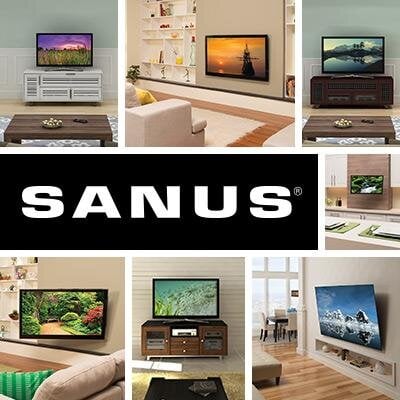TV placement in relation to the fireplace is, believe or not, a hotly debated topic. We especially see this in the comments on our Facebook posts about mounting a TV above a fireplace.
One of the biggest concerns we hear is that a TV positioned over a fireplace is at an uncomfortable viewing angle, and this can be true, as most TVs mounted over the fireplace will be above your eye level when you are seated. There are a few solutions that help bring the TV closer to eye level when you need to place your TV above natural viewing height – like over the fireplace. We’ll cover that further below.
Read on to see how you can get a better viewing experience when mounting a TV over the fireplace and for several great TV placement ideas that don’t involve the fireplace.
1. Mount Your TV Over the Fireplace
Whatever your opinion of placing a TV over a fireplace may be, there is no denying that it is certainly a trend. There are two big plusses that the TV above fireplace arrangement has going for it:
- When done correctly (e.g. the size of the TV is to scale with the fireplace), mounting a TV over the fireplace is an easy way to create an overall balanced look with the TV on top and the fireplace below.
- Placing the TV and fireplace in one spot also creates a single focal point, which can really simplify your furniture arrangement, since you aren’t trying to structure your room layout around two potentially competing focal points.
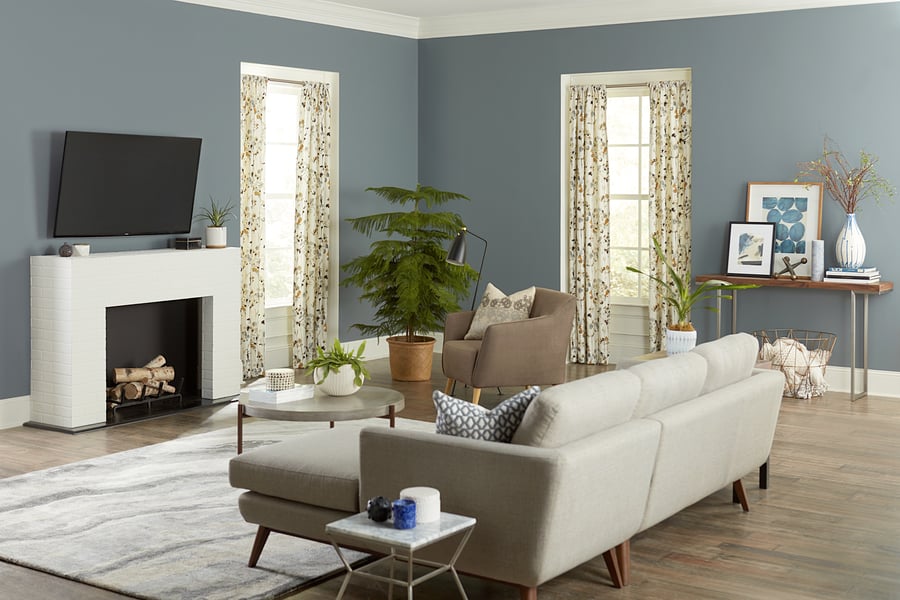
Now let’s touch on the TV height issue. The type of TV mount you use can help mitigate unnecessary neck strain. It may seem like mounting your TV is similar to hanging a picture or mirror: you put it in one spot on the wall, and there it stays. While there are TV mounts that are stationary, when mounting a TV above a fireplace, you’ll want a mount that moves. Specifically, you’ll want one of two types of mounts:
- Tilting TV Mount: As the name suggests, a tilting mount allows you to tilt your TV downward to create a more comfortable viewing experience. You can tilt the TV downward when it is in use, and when you’re done, return the TV to its flush position.
- Full-Motion TV Mount: Like a tilting mount, a full-motion mount provides tilt. It also includes extension and swivel. The extension allows you to pull your TV away from the wall in order to be able to fully swivel your TV left or right depending upon where you are in the room. Also, like the tilting mount, when you are done using your TV, you can place it back in its original position against the wall.
Before getting going on the project, there are a few things you should consider before mounting a TV over a fireplace. Things like wall stud location and electric outlet placement can impact the type of mount you’ll need.
2. Place Your TV Next to the Fireplace:
Many newer homes come with built-ins perfectly designed to house a TV so that it rests in balance with the fireplace and other surroundings. Even if you don’t have a recessed space like a built-in, you can use the wall space near your fireplace in a similar fashion.
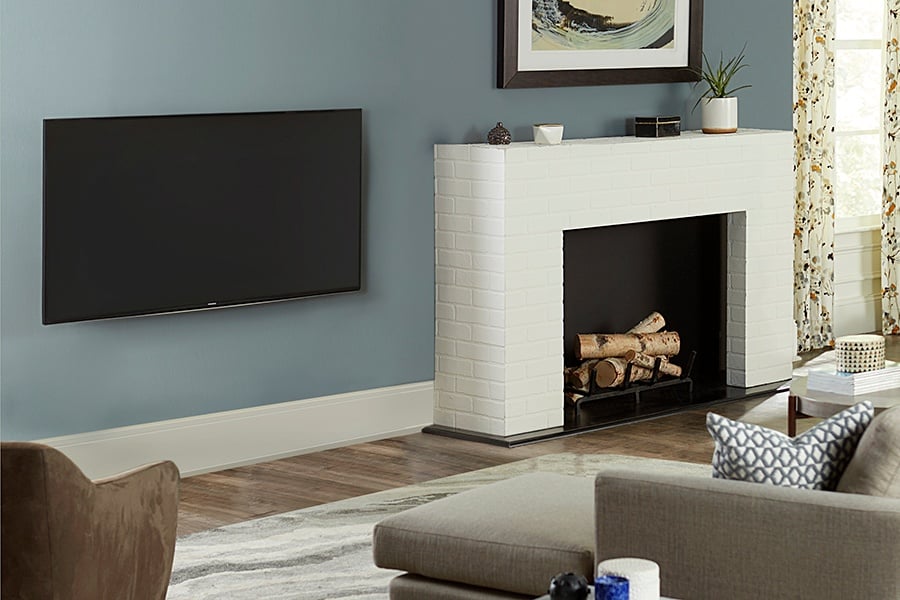
Because the TV will be in close proximity to the fireplace, you won’t have competing focal points within your room, which can help reduce the challenge of creating a functional furniture arrangement that incorporates both the fireplace and TV.
In this setup, you can place your TV on a piece of media furniture next to the fireplace or mount your TV to the wall. This may not be a surprise, but we recommend mounting your TV.
There are two specific reasons why:
- First, it can be challenging to find a piece of media furniture that fits your style and space that doesn’t directly compete for attention with your fireplace.
- Second, mounting your TV to the wall provides more functionality than a TV on a stand. You are able to tilt and swivel your TV to get the best viewing experience, and when you’re done watching, you can easily move the TV so that it is flush to the wall – letting your fireplace and the artwork and accents you’ve chosen to put above the mantle be the star.
3. Mount Your TV in the Corner:
The corner may seem like an unlikely spot for the TV, but it can be a great TV placement option – especially if you’re short on space.
And to be clear, mounting your TV in the corner isn’t the same as putting your TV in the corner as an afterthought. Using a mount, specifically a full-motion mount, lets you point your TV to where you are sitting so you get a better viewing experience while using your TV, and it allows you to push your TV against the wall when you’re not.
If you are someone who generally thinks of a TV as an eyesore on your overall aesthetic, this setup allows you to have your TV almost inconspicuously tucked away on the periphery of your room.
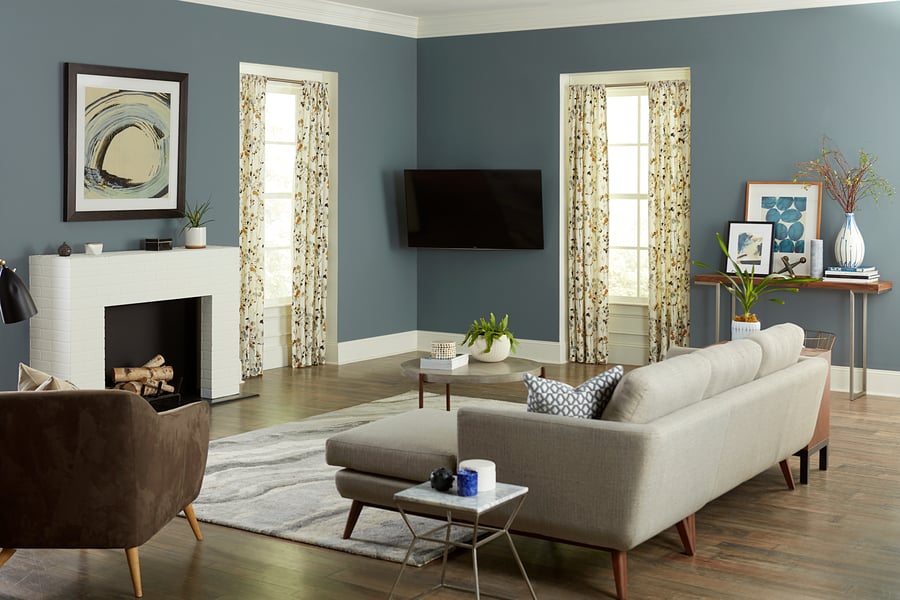
As far as TV placement, you will want to mount your TV in the corner where your fireplace wall and a perpendicular wall meet. This, again, ties back to simplifying furniture arrangement by keeping key points of focus in closer proximity.
4. Place Your TV Perpendicular to the Fireplace:
So far, we’ve talked about locations that keep the TV on the same wall as your fireplace. Here is an option that places the TV on perpendicular wall.
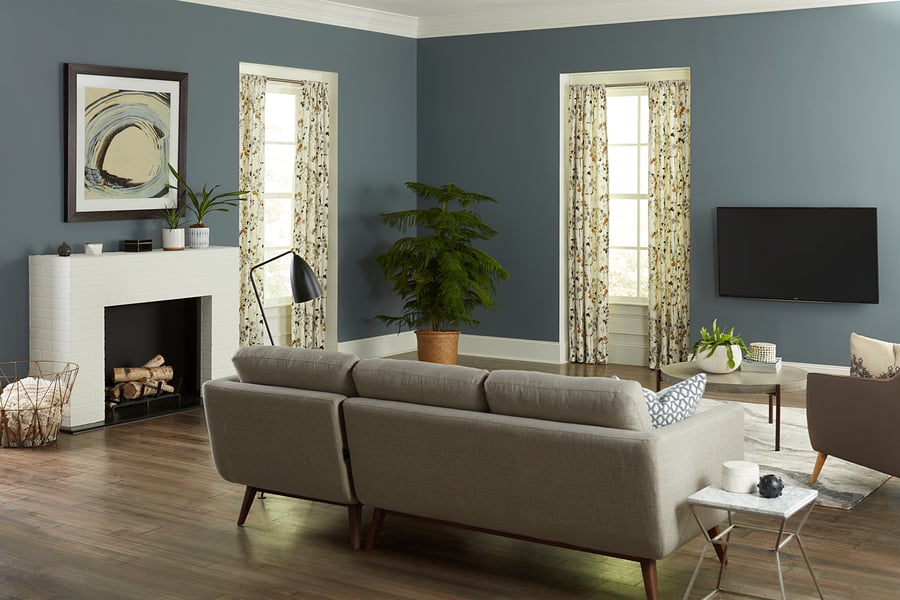
As you can see in the photo, the fireplace and TV are around 90 degrees apart. And even though they are on different walls, the TV and fireplace aren’t competing with one another.
A sectional works particularly well in this setup because functionally, it allows you to enjoy the fireplace and have a comfortable view of the TV, and aesthetically, it unifies the two focal points. In place of a sectional, you could get a similar effect using two sofas with one facing the TV and the other facing the fireplace.
Based on the amount of space you have around your TV and your personal preferences, you can place your TV over media furniture or skip media furniture altogether.
If you don’t have glare from windows or indoor light sources, a fixed-position mount will help you position your TV at the ideal viewing height. If you want a mount with more functionality, a full-motion mount will help you address unwanted glare on your screen and allow you to point your TV to where you are seated in order to get the best viewing experience.

